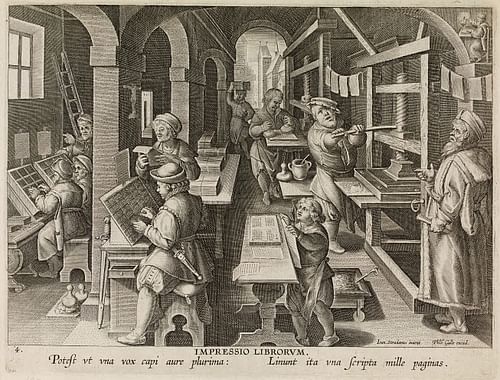The invention of the printing press with movable type revolutionised book production. It brought knowledge to a wider audience and enabled the development of new ideas.
Printed items are all around us. From jam labels to paper jigglers, from the Bible to the work of Machiavelli. This exhibition demonstrates the diverse role print has played in history.
The Invention of the Printing Press
Before the invention of the printing press, books were primarily handwritten, which was time consuming and expensive. Johannes Gutenberg, a goldsmith and printer, invented the movable-type printing press in 1440 which made it much faster to produce books.
This new technology allowed more people to read more books than ever before. It also helped the spread of ideas and increased literacy rates. The printing press allowed the works of scientists like Copernicus and Galileo to be widely circulated.
The printing press also allowed writers to expand on the literary and historical traditions of their times. This was aided by the emergence of the idea of Humanism. This concept was based on the belief that every human had the potential for self-fulfillment and understanding of the world around them.
The Protestant Reformation
The first major religious movement that emerged as a result of the printing revolution was Protestantism. This movement was founded on the notion that Christian believers should be less dependent on Catholic Church leaders and priests for spiritual guidance and salvation, and instead look directly to the Bible, which is considered one of the Christian holy books, for their faith.
During the 16th century, European printmakers turned out an astonishing amount of Protestant literature. This can be largely attributed to the efforts of Martin Luther, who began the Reformation with his publication of 95 Theses in 1517.
These theses challenged many of the Catholic Church’s traditions, including the belief that celibacy was a necessary part of the clergy and that the Catholic version of the bible, known as the Vulgate, was the only authentic text. The printing press helped Luther spread his ideas quickly and widely, enabling the Reformation to become one of the largest religious movements in history. Each new work of Protestant literature would build off the previous ones, furthering the overall movement.
The Enlightenment
Before printing was invented books, scrolls and other hand written materials were expensive and only accessible to the upper classes. Printing reduced the cost of production and made it possible for a broader swath of society to learn to read. This led to a rise in literacy rates.
This new ability to read and write encouraged people to question tradition, religion and other authority and ushered in the Enlightenment. Philosophers like John Locke, Voltaire and Jean-Jacques Rousseau elevated critical reasoning above custom and tradition and argued for individual liberty.
A new emphasis on illustrating books was also emerging. Artists like Durer began to elevate printmaking into a genre of fine art. He experimented with different techniques to combine idealist and naturalistic qualities in his woodcuts and engravings.
Printers developed more sophisticated typeface designs, aiming to make the letters look less stylized and more like handwritten manuscript writing. One example is the Cronica Cronicarum printed by Johannes and Wendelin of Speier in 1521. This scroll is some 11 metres long and contains 42 splendidly decorated woodcuts that break with traditional convention.
The Age of Exploration
The printing press allowed books to be produced faster and at a lower cost. As a result, they became more widely available and people were able to share ideas and information more easily. This led to a great European cultural and intellectual explosion.
The Renaissance also saw the Age of Exploration, a time when many Europeans began exploring distant lands. This was largely motivated by the desire for trade, but it was also driven by religious and cultural curiosity, the search for new land, and economic interests (such as the quest for spices).
Advances in shipbuilding, navigational tools and knowledge of world geography enabled explorers to travel far more quickly and easily than before. This period saw the invention of the culverin and a variety of other military weapons, including the falconet and a traverse board. It also saw the first printed maps and charts.
The Spread of Protestantism
The Protestant Reformation was a religious movement initiated in 1517 by Martin Luther and his 95 Theses, which challenged Church doctrine and promoted the belief that the Bible should be the sole source of spiritual authority. While the key ideas of Protestantism were not new, the invention of the printing press enabled them to spread quickly and widely. The printed versions of the bible allowed ordinary people to read the texts for themselves, whereas previous religious writings were only accessible to those who could read Latin or Greek. In addition, princes who supported Martin Luther offered protection and encouragement in their territories, and cities with vibrant middle classes were particularly receptive to the new ideas.
The Reformation also brought about a shift in the way churches were designed, as opposed to Catholic churches which adorned their buildings with stained glass windows and saintly statues, Protestant churches favoured a simpler approach. Combined with the deconstruction of the bonds between the church and state, the Protestant Reformation had significant ramifications on European society and culture, which are still evident today.

